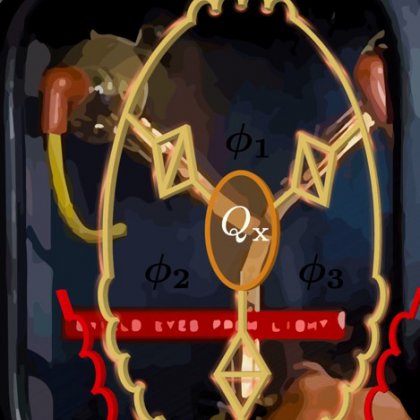
Physicists have invented a flux capacitor and, while it might not run a ‘Back to the Future’ inspired time machine, they say it will have important applications in communication technology and quantum computing.
The team from The University of Queensland, RMIT University and ETH Zurich have proposed a device which uses the quantum tunnelling of magnetic flux around a capacitor which they say can break time-reversal symmetry.
UQ Professor Tom Stace said the research proposed a new generation of electronic circulators – devices that control the direction in which microwave signals move.
“Unfortunately, the effect does not allow us to travel back in time, as Doc Brown’s Hollywood version did,” Professor Stace said.
“Instead, it makes radio signals circulate around the circuit in only one direction, much like cars on a roundabout.
“Such a device could be used to isolate parts of an experimental apparatus from each other, which is crucial when the individual parts are extremely sensitive quantum systems.”
RMIT Professor Jared Cole said the device would be built from a superconductor, in which electricity could flow without electrical resistance.
“We propose two different possible circuits, one of which resembles the iconic three-pointed-star design of the cinematic flux capacitor,” Professor Cole said.
“In it, quantum ‘tubes’ of magnetic flux move around a central capacitor by a process known as quantum tunnelling, where they overcome classically insurmountable obstacles.”
The combination of magnetic fields and electric charges leads to what the physicists call broken time-reversal symmetry.
ETH Zurich’s Dr Clemens Mueller said the device was a crucial component for next-generation technologies, including the long sought-after quantum computer.
“Our research makes an important step towards scaling up this technology, where researchers need to precisely direct control and measurement signals around a quantum computer,” he said.
The research could also find application in developing better electronics for mobile phone and wifi antennas and improving radar.
The research is published in Physical Review Letters (DOI: https://doi.org/10.1103/PhysRevLett.120.213602).
Media: Professor Tom Stace, stace@physics.uq.edu.au, +61 7 3365 1868
.jpg)










